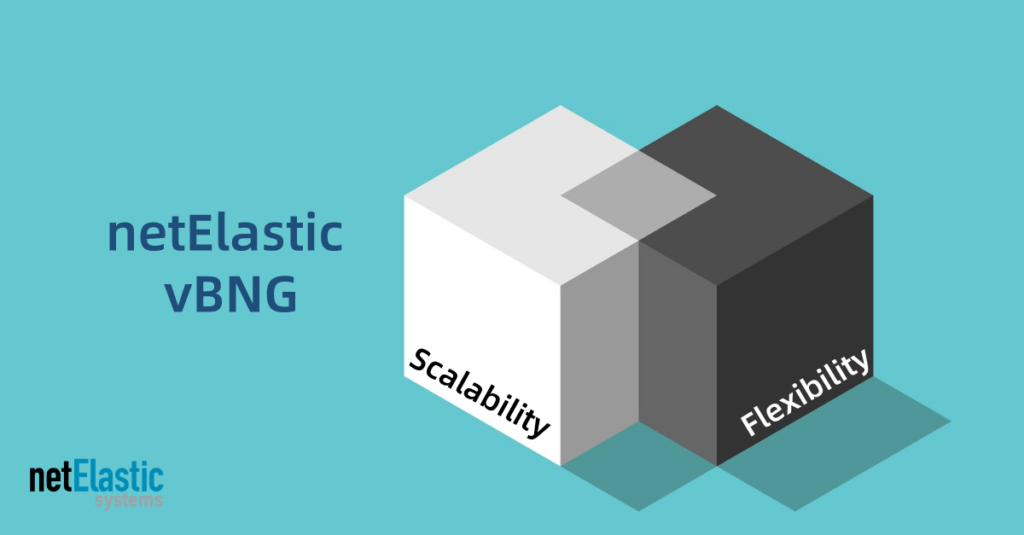Subscriber demand for bandwidth has been growing rapidly, and demand is expected to grow even faster in the future due to increasing numbers of connected devices, video streaming, and gaming. Of course, the global pandemic has taken bandwidth demand to a new level, with employees working from home and students learning from home.
Increasing demand for bandwidth creates major opportunities for broadband providers, but it also creates major challenges. As network traffic rises, the need to increase network capacity rises in parallel.
Increasing Network Capacity
The traditional network model requires purchasing additional hardware to increase network capacity. This is both expensive and time consuming, since hardware appliances need to be configured one at a time.
As someone once said, what traditional hardware-based networks lack in scalability and flexibility, they make up for in high costs.
Where do Broadband Network Gateways Fit In?
A Broadband Network Gateway (BNG) is the access point for individuals (subscribers) to connect to the broadband network. The BNG aggregates, terminates, and administers policy for several thousand broadband user sessions. Once connected, a subscriber can access the broadband services delivered by their providers.
Broadband Network Gateways and Network Capacity
Traditional hardware-based BNGs, like traditional networks, lack scalability and flexibility. Once a fixed-capacity BNG from a hardware manufacturer reaches its capacity, you need to purchase additional BNGs. And the purchasing and provisioning of hardware BNGs is time-consuming and expensive. As a result, rapid scalability is nearly impossible with hardware-based BNGs.
This lack of scalability also means broadband providers have to purchase more hardware than they need today, in order to support network and subscriber growth in the future.
netElastic Virtual BNG: Built for Scalability and Flexibility

netElastic developed one of the industry’s first software-based, or virtual BNGs. Since it launched, netElastic vBNG has become an industry leader by using software-defined networking (SDN) technology to deliver market-leading scalability and flexibility with an optimized data plane and highly scalable design.
vBNG separates the data plane and control plane so each can be scaled independently, which provides the ability to dynamically adjust the network based on constantly changing demands. Both the control plane and data plane can scale up and down to meet bandwidth needs, and they can run in different hosts to take advantage of CPU cores to maximize scalability and performance.
vBNG also takes advantage of the ever-increasing power of white-box servers to provide the elastic scalability broadband providers need. As a testament to its scalability, vBNG supports very small subscriber bases up to millions of subscribers.
Scalability + Cost Savings
Legacy hardware-based BNGs are sold by router manufacturers that bring excellent brand names and years of experience selling hardware-based equipment. They also usually bring high costs. These legacy BNGs are “closed systems” that lock carriers into proprietary hardware and software, which are expensive and difficult to scale.
netElastic vBNG not only increases scalability, but it also decreases costs. By separating software from proprietary hardware, broadband providers can save on both capital and operating costs. netElastic also offers a “pay as you grow” pricing model, which eliminates the need to overprovision, or purchase more hardware than you need.
Ufone, one of New Zealand’s leading business VoIP service providers, experienced this first-hand. “The big router manufacturers required close to 1,000% more investment dollars for a single BNG (compared to netElastic), since we were expected to purchase a larger number of licenses up-front than we actually needed,” according to Ufone’s CEO Nigel Rayneau. “The cost savings by using the netElastic vBNG on the provider edge allowed us to invest more in our core and backbone infrastructure, not only allowing us to provide all the benefits and features that our larger competitors provide, but also to strengthen our overall network for less cost.”
Easily Increase Network Scalability and Flexibility
netElastic built their Virtual BNG from the ground up by working with eight of the top twenty carriers in the world (in addition to many smaller ones). These service providers shared the importance of network scalability and flexibility to their future success. And this valuable feedback laid the foundation for the scalability and flexibility built into netElastic vBNG.
To learn more about vBNG, please download the Data Sheet, or better yet, request a demo.

